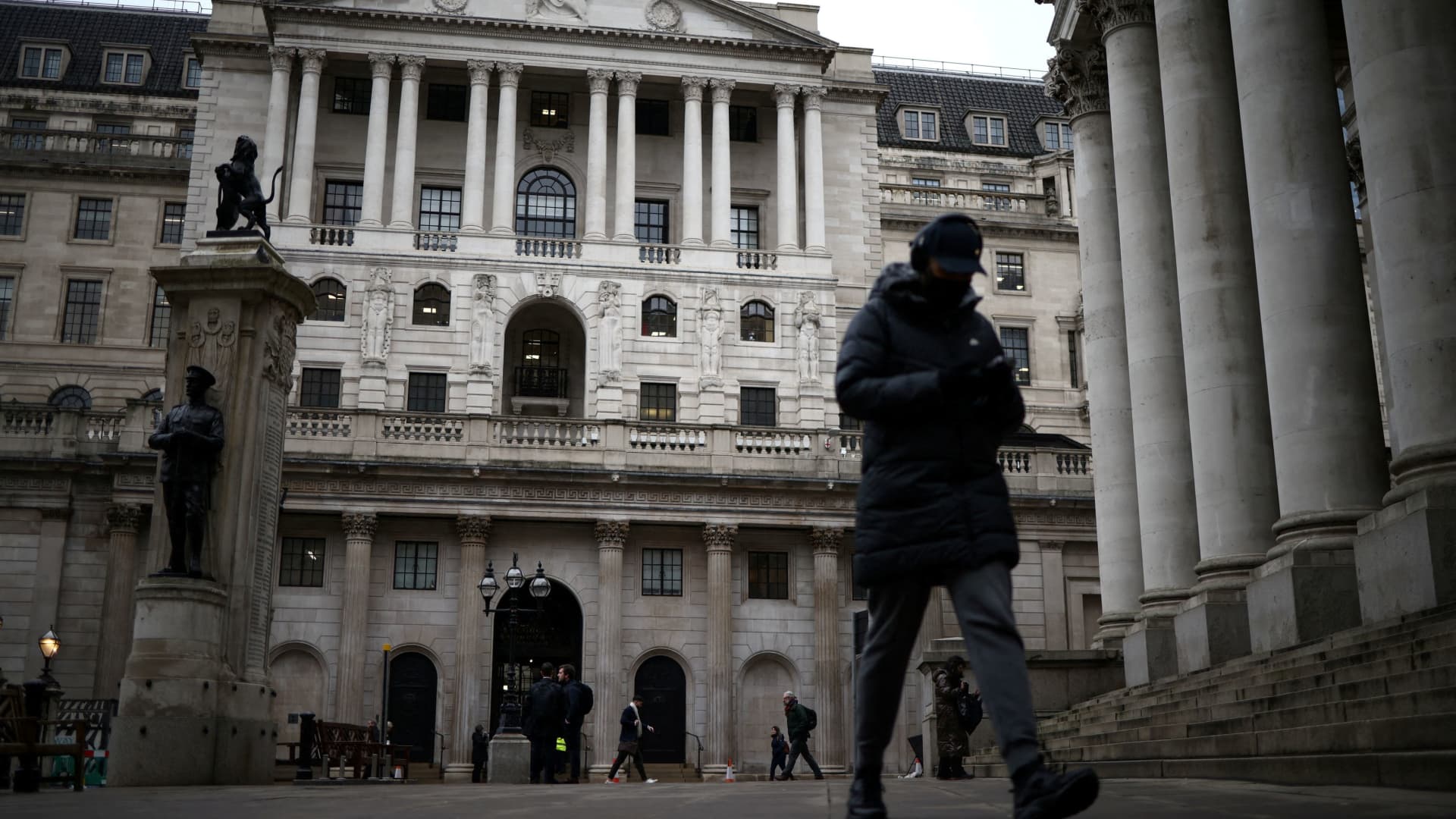LONDON — The Bank of England is widely expected to hold interest rates steady at 5.25% on Thursday, but market observers will be closely watching voting patterns, projections and language for hints about future rate cuts.
The market on Wednesday afternoon was pricing a more than 96% likelihood that the British central bank’s Monetary Policy Committee will leave rates unchanged at their current historically high levels, as recent economic data has been pointing to meaningful progress across the institution’s three indicators of inflation persistence.
The labor market has shown signs of rebalancing, although the overall trajectory remains somewhat uncertain, while wage growth and services inflation have surprised the bank’s November projections substantially to the downside, Goldman Sachs economists noted Sunday.
“We therefore expect a 9-0-0 vote split with no dissents, but the vote split remains difficult to predict given limited recent commentary by MPC members,” Goldman economist Ibrahim Quadri said, suggesting the three dissenting voices for further rate increases at the December meeting will fall into line.
“In the case of dissents, we think a dovish dissent in the form of [Swati] Dhingra voting for a 25bp cut and/or a hawkish dissent in the form of [Catherine] Mann voting for 25bp hike are possible, but we think hawkish dissents are less likely given that there has been a moderation in underlying services inflation since the MPC’s last meeting.”
The services consumer price index annual rate came in at 6.4% in December, a slight increase from the 6.3% of November, but below the 6.9% of September, according to the last data available to the MPC when it made its November projections.
U.K. headline inflation unexpectedly nudged upward to an annual 4% in December on the back of a rise in alcohol and tobacco prices, while the closely watched core CPI figure was unchanged at 5.1%.
Though sluggish, the U.K. economy has also outperformed expectations and thus far staved off a technical recession, though GDP flatlined in the third quarter of 2023 and many economists still see a recession in store.
Quadri says the updated projections of Thursday are likely to show a meaningful upward adjustment to the bank’s growth forecast and a reduction of its near-term inflation forecast, though this could be revised up toward the end of the forecast horizon due to the lower conditioning rate path.
“We expect the MPC to retain its data-dependent approach and reiterate that monetary policy ‘will need to be sufficiently restrictive for sufficiently long’,” Quadri said.
“But we think that the MPC may mitigate its tightening bias and soften its policy language somewhat by no longer stating that ‘further tightening in monetary policy would be required if there were evidence of more persistent inflationary pressures’.”
Goldman sees a first 25 basis point cut in May, followed by further quarter-point increments at every meeting until the bank rate reaches 3% in May 2025.
JPMorgan U.K. economist Allan Monks also expects the MPC will hint at a potential easing of monetary policy around the summer, but does not believe it will come until August.
“The BoE will not shut the door on a potential May cut, but we think it will also not want to encourage expectations for an easing that early,” he said in a research note last week.
“The BoE’s updated narrative is likely to be that clear progress is being made on inflation, but that it is too early to declare victory and therefore caution must be exercised when thinking about when and how quickly policy can be normalised.”
JPMorgan also expects the votes for further rate increases to disappear, leaving the MPC unanimous in its decision to hold rates on Thursday. The bank did not rule out the possibility of Dhingra voting for a 25 basis point cut at this meeting.
“While the MPC’s vote is not formal guidance, there is often a fair degree of weight placed on its change from one meeting to the next,” Monks said.
“If there is one dovish dissent, however, this should not necessarily be viewed as a reliable guide to where the rest of the committee is and hence the likelihood of an earlier cut.”






